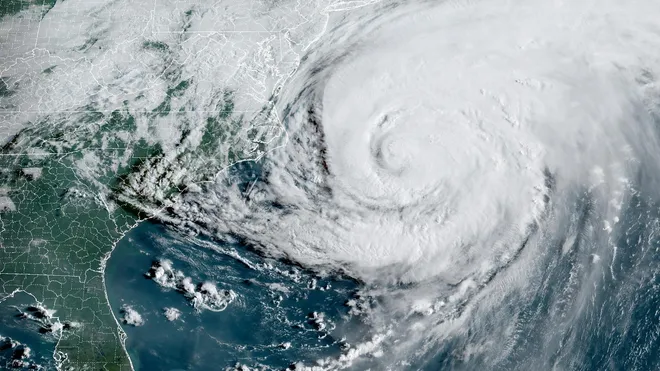- Why New Jersey Declared a State of Emergency
- Hurricane Erin: Path and Forecast
- Lessons from Hurricane Sandy
- How Residents Are Responding
- The Role of Technology in Hurricane Preparedness
- Impact on Infrastructure and Economy
- Federal and Local Coordination
- Environmental Concerns
- Community Stories: Preparing for Erin
- Practical Safety Tips for Residents
- Looking Ahead: What Erin Means for New Jersey
- FAQs
- Conclusion
As Hurricane Erin edges closer to the U.S. East Coast, New Jersey has officially declared a state of emergency. The announcement underscores the seriousness of the storm’s potential impact, as residents brace for powerful winds, heavy rain, and possible flooding. Hurricanes along the Atlantic seaboard are no stranger to New Jersey, but Erin’s size, speed, and projected path have heightened concerns, drawing comparisons to past storms like Hurricane Sandy in 2012.
This declaration is not just symbolic—it unlocks resources, emergency protocols, and response measures designed to protect lives and property. For millions of New Jersey residents, the days ahead will test preparedness, resilience, and community spirit.
In this in-depth article, we’ll explore the details of the state of emergency, the projected trajectory of Hurricane Erin, expert forecasts, historical lessons, government responses, and practical steps that residents can take to stay safe.
Why New Jersey Declared a State of Emergency
Governor Phil Murphy announced the state of emergency late Thursday evening, citing the “imminent and severe threat” posed by Hurricane Erin. Such declarations allow state officials to:
Mobilize the National Guard.
Reallocate emergency funding.
Suspend certain regulations to speed up aid.
Coordinate local, county, and federal responses.
Murphy emphasized that this is a proactive step, not a cause for panic. “We learned the hard way from storms like Sandy that early action saves lives,” he said during a press conference.
The declaration also sends a strong signal to residents: take the warnings seriously, follow evacuation orders, and prepare for disruptions to power, transportation, and daily life.
Hurricane Erin: Path and Forecast
Meteorologists at the National Hurricane Center (NHC) have been tracking Erin since it formed as a tropical depression over the Atlantic. By the time it reached Category 2 strength, the storm’s outer bands had already begun stirring up rough surf along the East Coast.
Current projections suggest:
Sustained winds could reach 100–110 mph near landfall.
Rainfall totals may exceed 8–12 inches in parts of New Jersey.
Storm surges of 4–7 feet are possible along the Jersey Shore.
Tornadoes spawned by the storm’s outer bands cannot be ruled out.
Experts warn that even if Erin weakens slightly before making landfall, its broad wind field and slow movement could prolong damage, especially from flooding.
Dr. Karen Morales, a hurricane specialist at Rutgers University, explained: “The concern with Erin is not just its strength but its persistence. A slow-moving hurricane over New Jersey could lead to catastrophic inland flooding.”
Lessons from Hurricane Sandy
The specter of Hurricane Sandy looms large whenever a powerful storm threatens New Jersey. In October 2012, Sandy devastated the state, causing:
$30 billion in damages.
2.7 million power outages across the state.
The destruction of communities along the Jersey Shore.
The deaths of at least 37 New Jersey residents.
While Erin is not identical to Sandy, the psychological scars and infrastructure vulnerabilities remain. Many coastal residents have reinforced their homes, invested in backup generators, and developed evacuation plans—but others remain in vulnerable housing or flood-prone areas.
Emergency officials stress that past experience should fuel, not numb, vigilance.
How Residents Are Responding
In towns from Cape May to Newark, supermarkets and gas stations saw long lines as residents stocked up on essentials. Bottled water, batteries, canned food, and flashlights were among the most sought-after items.
Local hardware stores reported a surge in purchases of plywood and sandbags. One store owner in Toms River said, “It feels like déjà vu. Every time a storm approaches, we see the same rush. But this time, people are more anxious because of Sandy’s memory.”
Shelters have been prepared in several counties, with officials encouraging residents in flood-prone areas to consider relocating early.
The Role of Technology in Hurricane Preparedness
Unlike in 2012, today’s residents have access to more advanced forecasting tools and apps that provide real-time updates. Emergency alerts can be sent directly to mobile devices, offering evacuation instructions and storm tracking.
Social media also plays a critical role, with local governments posting road closures, shelter availability, and safety tips. However, officials warn against misinformation, reminding residents to rely on official sources like the National Weather Service and state emergency management offices.
Impact on Infrastructure and Economy
A state of emergency inevitably disrupts daily life and the economy. Anticipated impacts include:
Transportation: NJ Transit has already announced potential service suspensions if conditions worsen. Flights at Newark Liberty International Airport could face mass cancellations.
Utilities: Power companies like PSE&G and JCP&L have crews on standby, anticipating widespread outages.
Businesses: Many coastal shops and restaurants are boarding up, bracing for losses during the critical Labor Day weekend.
Tourism: The Jersey Shore, a summer hotspot, may see significant economic setbacks if evacuations occur.
Economists estimate that even a moderate storm could cause hundreds of millions in economic losses, depending on its duration and the extent of flooding.
Federal and Local Coordination
President Biden has been briefed on Hurricane Erin and indicated that federal disaster relief could be made available if conditions warrant. FEMA (Federal Emergency Management Agency) has already pre-positioned supplies and personnel in the region.
County-level emergency managers have activated hotlines, and local police departments are prepared to assist with evacuations. Volunteer groups, including the Red Cross, have also mobilized.
Such coordination is critical, as fragmented responses in past disasters have often led to delays in aid.
Environmental Concerns
Beyond immediate human impact, hurricanes leave lasting scars on the environment. New Jersey’s coastal wetlands, already under stress from rising sea levels, face erosion and saltwater intrusion.
Marine biologists warn that storm surges can devastate fish nurseries and shellfish beds, threatening local industries. Moreover, flooding can spread pollutants from industrial zones into waterways, creating long-term hazards.
Climate scientists argue that storms like Erin are becoming stronger due to warmer ocean temperatures, a consequence of global climate change. This raises pressing questions about the state’s future resilience.
Community Stories: Preparing for Erin
In Atlantic City, 68-year-old homeowner Linda Sanchez recalled losing her house during Sandy. She now lives in a rebuilt, elevated structure designed to withstand flooding. “I don’t take chances anymore,” she said. “I’m already packed and ready to go if they tell us to evacuate.”
Meanwhile, in Newark, community centers have distributed emergency kits to low-income families. One organizer explained: “Not everyone can afford to stockpile food and supplies. That’s why mutual aid and community support are so important in times like these.”
These stories highlight the resilience and solidarity that often emerge during crises, even as challenges loom large.
Practical Safety Tips for Residents
- Authorities recommend residents take the following steps immediately:
- Create an emergency kit with water, food, medication, and flashlights.
- Charge phones and backup batteries in advance of possible power outages.
- Know your evacuation routes and have a plan for pets.
- Secure outdoor items like patio furniture that can become projectiles in strong winds.
- Avoid driving during floods, as most hurricane-related deaths occur in vehicles trapped in rising water.
Follow official alerts rather than rumors on social media.
Preparedness may mean the difference between life and death when storms strike.
Looking Ahead: What Erin Means for New Jersey
The declaration of a state of emergency is both a precaution and a recognition of the storm’s seriousness. While no forecast is perfect, the state’s proactive stance could minimize loss of life and property.
Experts believe that New Jersey’s experience with past hurricanes has strengthened its preparedness, but they caution against complacency. Climate models suggest that storms like Erin could become more frequent, demanding long-term infrastructure investments in flood defenses, resilient housing, and sustainable coastal planning.
FAQs
Why did New Jersey declare a state of emergency for Hurricane Erin?
The declaration allows the state to mobilize resources, deploy the National Guard, and prepare for potential flooding, power outages, and evacuations.
How strong is Hurricane Erin expected to be?
Forecasters predict it could reach Category 2 strength, with sustained winds of 100–110 mph and heavy rainfall exceeding 8–12 inches in some areas.
Is Hurricane Erin expected to be as damaging as Hurricane Sandy?
While not identical to Sandy, Erin could cause significant flooding and wind damage. Comparisons are being made due to the storm’s size and potential path.
What should residents do to prepare?
Authorities urge creating emergency kits, charging devices, securing property, and following evacuation orders when issued.
Will there be federal assistance for New Jersey?
Yes. FEMA has pre-positioned resources, and President Biden has pledged federal support if conditions require disaster declarations.
Conclusion
New Jersey’s declaration of a state of emergency ahead of Hurricane Erin is a sober reminder of the power of nature and the necessity of preparation. While the storm’s final path remains uncertain, the state’s proactive measures, combined with residents’ vigilance, offer hope that the worst outcomes can be avoided.
As Erin approaches, the message is clear: respect the warnings, prepare responsibly, and support one another. Hurricanes may test the strength of communities, but they also reveal resilience, solidarity, and the capacity to rebuild stronger than before.












